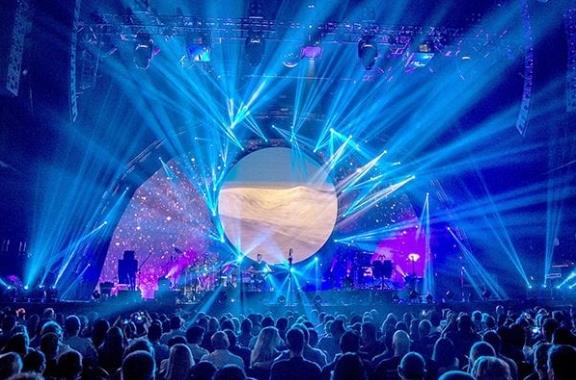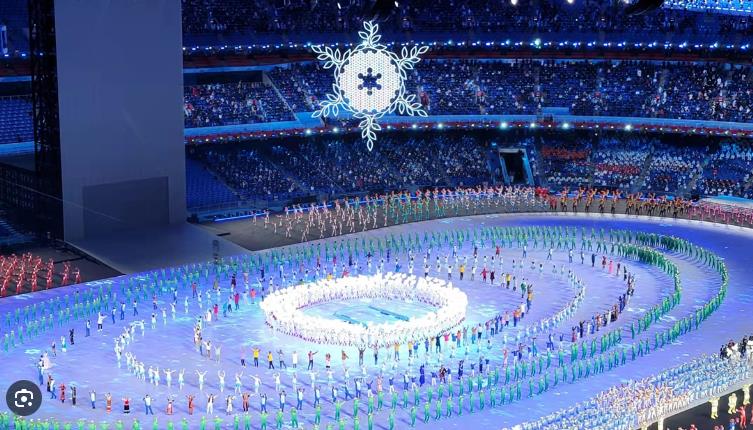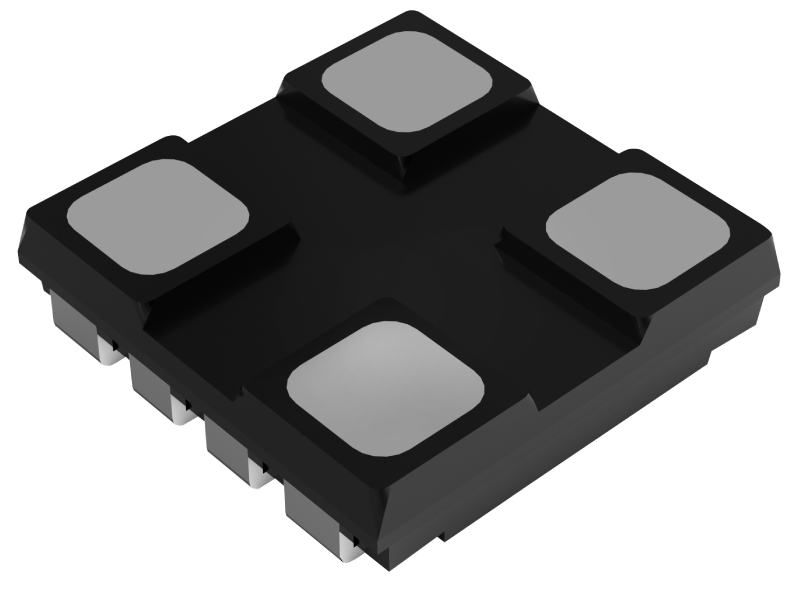Other required equipment to run stage LED displays
Famous events best utilized stage LED displays
How to choose a right stage LED display
Kinglight LEDs for stage LED displays
Stage performances have always been a popular entertainment. Whether it is an opera, concert, or an art performance, there are a wide range of fans. Since the times changes and technology develops, LED screens are being widely used at the back of the stages, and play important parts in these events. Usually, we call these screens as stage LED displays.

Generally speaking, stage LED displays can present various forms of visual contents,including texts, images, videos, animations, and special visual effects, which are dedicated for an overall enhance viewing experience of the event.
So, what specific characteristics might a stage LED display have? And if you’re going to purchase or rent one for your own event, how can you choose a right one? Here in this article, we’ll explore all aspects of stage LED displays.
Stage LED displays refer to those LED displays designed for stage events. They usually appear at the back or sides of a stage, or sometimes even around the audiences.
Usually, stage LED displays are assembled from multiple LED display panels. Each LED display panel generally adopts a lightweight design and has a simple but solid structure for easy and quick installation, which is a must in stage events.
In addition, stage LED displays usually have excellent color rendering and can play various forms of visual content, such as images, videos, and text information, thus bringing an ultimate visual experience to the audiences.
The activities on the stage are often temporary, diverse in form and unique in purpose or theme. Therefore, stage LED displays usually have the following characteristics.
Using lightweight LED modules to assemble a large stage LED display can not only reduce the physical exertion of installers, but also effectively reduce the load on related supporting structures, avoiding safety hazards caused by excessive weight of the screen.
The LED display panels used to assemble the stage LED display generally use a lock assembly with a simple structure, easy operation and firm connection. This not only allows the stage LED display to be installed quickly, but also avoids safety hazards caused by loose locks.
stage LED displays are one of the main ways to enhance the visual experience of a stage, and therefore often have excellent color reproduction capabilities, thereby more accurately presenting visual content with ever-changing colors, bringing the audience an ultimate visual feast.
Stage LED displays often need to be quickly transported to different activity locations and undergo frequent and repeated disassembly and assembly. Therefore, their individual LED modules usually have strong anti-collision performance to minimize malfunctions caused by damage to the screen.
In some events, a lot of unique designs are utilized to express the theme, including the LED screens. At these circumstances, you will also need more unique shaped LED displays specifically designed for the event.
The above mentioned are some common features of stage LED displays. And in fact, stage LED displays often have different characteristics due to their specific application scenarios and purposes.
For example, stage LED displays used for outdoors generally have good waterproof performance; while stage LED displays for indoors often have lower brightness but higher resolution.
Stage LED displays can be generally divided into main screens, secondary screens, and extended screens according to different application scenarios and functional requirements. Of course, in some stage performances, some LED screens with unique application effects, such as LED floor tile screens and special-shaped LED screens, are often added according to the actual effects to be achieved.
Main screen:
Located in the center of the stage, it is the main display area for stage performances. The main screen has high requirements for display effects and usually uses a small-pitch or high-pixel-density LED display to ensure a clear and delicate picture.
Sub-screen:
Installed on both sides of the main screen or other locations, used to display auxiliary information or enhance stage effects. Generally speaking, the pixel pitch of the sub-screen is relatively large, and it is mainly used to display some auxiliary visual effects, and is used in conjunction with the main screen to bring a shocking visual experience to the audience.
Expanded screen:
Suitable for large occasions, such as large concerts, dance parties, etc. Expanded screens are in fact additional LED displays being set up around a venue. We can simply understand them as an expansion of the main screens and sub-screens.They play video content even around the audiences not just around the stage.
In stage performances, there are often some LED screens with specific application purposes, such as LED floor screens, irregular shaped LED screens, etc.
LED floor screens are generally used directly for stage floor decoration, thus providing a more three-dimensional visual experience for stage performances. Generally speaking, the appearance of LED floor tile screens is often accompanied by the bird’s-eye view effect brought by drone photography, and is mainly used in large-scale stage performances that need to be broadcast to more audiences through live broadcasts.
Irregular shaped LED screens are generally designed and built to reflect the specific theme of stage performances, so they are generally placed in the most conspicuous position behind the stage as the main screen. Of course, special-shaped LED screens can also be used as secondary screens to bring a more unique visual experience to dancing activities.

Round LED displays are commonly used irregular displays in stage events.
So, to get stage LED displays run properly, what else equipment should we get?
Generally speaking, we need to equip the operation of the stage LED display with a control system, power distribution system, cooling system, sound system and some other auxiliary equipment.
Function: The control system is the core of the stage LED display, responsible for deciding what content to play on the big screen, which is equivalent to the human brain.
Requirement: When choosing a control system, you should consider its convenience in making and playing programs, the flexibility of the playing format, and the simplicity and ease of operation. Common control system brands include Linsn Technolgoy, DBStar, Colorlight, Mooncell, etc.
Power distribution cabinet: The equipment that provides power to the LED display screen needs to be customized according to the power of the screen. Too little power will cause frequent tripping, affecting the normal use of the display screen; too much power will cause waste.
Power distribution: Ensure that each device and component distributes voltage and current stably, especially when the LED screen area is large, the instantaneous startup current is large, and the power distribution system needs to effectively manage these current fluctuations.
Cooling method: The cooling system of LED display screen mainly uses fans and air conditioners. Outdoor LED display screens generally use air conditioners for cooling, and the horsepower and quantity of air conditioners are determined according to the specifications and size of the display screen; while indoor LED display screens or northern areas with lower temperatures generally use fans for cooling to save costs.
Amplifier and speakers: They have a great impact on the effect of LED display. For indoor LED display, fixed installation speakers can be used, while for outdoor LED display, all-weather three-proof speakers are recommended to cope with bad weather.
Multi-function control card: used to automatically adjust the brightness, temperature and other values of the LED full-color display screen in different time periods, so as to save energy and extend the service life of the display screen.
Video processor: improve the overall display effect and functional application of the large screen, solve the problems of signal access, processing and display, and complete the format conversion between many signal formats.
Sending card and receiving card: the sending card is the starting point of signal transmission, and the receiving card receives the signal sent by the sending end. These devices are particularly important for LED screens with a large number of pixels.
Lightning arrester: in some application scenarios that may be struck by lightning, such as areas with frequent lightning strikes or thunderstorms, lightning arresters should be used to prevent the stage LED display from being struck by lightning, so as to protect the personal safety of the participants in the stage activities and ensure the smooth progress of related activities.
Bracket and structure: Used to fix and install LED display screens, especially stage screens. Due to their heavy weight, they require extremely high load-bearing and stability of the stage, so steel structure stages are often used to ensure safety.
As one one of the most common applications of LED, stage LED displays are widely used in worldwide famous events. And we can easily find many classic application cases of stage LED displays.
For example, the world record breaking Adele Munich concert LED video wall, which have attracted widespread attention around the world.Even those who don’t know much about Adele and concert have become very interested in it because of the high cost of the LED screen.
When we look back to the beginning of August, the famous British pop singer Adele’s one-month resident concert in Munich had attracted worldwide attention because of the screen stand behind her. Report says the wave shape LED video wall measures 220 meters in width and 19 meters in height, an a total area of 4159.7 square meters.

Adele Munich LED screen became a popular topic around the world.
The Guinness World Records recognized the screen as the world’s largest continuous outdoor LED video wall. This stage LED display was built with a one-time purchase of ROE LED panels, and costed more than 40 million dollars.
The screen itself has sparked heated discussions about LED screens among people all over the world, and even those who are not interested in pop music and know little about LED screens have participated in it.
The LED floor at the 2022 Beijing Winter Olympics is also famous worldwide for its large size of over 10,000 square meters and extreme visual effects, transforming the Beijing Winter Olympics opening ceremony venue into a huge LED stage.
The LED floor screen is mainly used to show the audience the elements of the ice and snow world that match the theme of the Winter Olympics, and to create unique visual content for various styles of performances.
It is reported that the LED floor covers an area of 11,500 square meters, of which the rectangular section in the middle is provided by Leyard, and the two semicircular sections on both sides are provided by BOE.

The largest LED floor at 2022 Beijing Winter Olympics
Through the above mentioned projects, we can see that stage LED displays can not only bring impressive visual impacts to the event, but also greatly increase their influence around the world.
So if we want to increase the outcome of an event, how can we choose a suitable stage LED display? What factors should we consider? Below 5 tips will give you a better guide over it.
Before we go to a supplier, we should be clear about the actual needs of the events. That is the size and layout of the stage, and the content we’re going to display on the screen. These things help us to determine the specific size and shape of the stage LED display according to actual needs.
Viewing distance is also one of the factors to consider when purchasing a stage LED display. Generally speaking, the closer the viewing distance, the smaller the pixel pitch of the stage LED display and the higher the resolution; if the viewing distance is farther, you need to choose an LED screen with a larger pixel pitch.
The main screen usually chooses a high-definition rectangle with a larger area to show a smoother stage scene.
In addition, we also need to determine the appropriate screen brightness, contrast, refresh rate and other parameters for the LED screen according to the different content of the stage performance program.
After initially determining the basic requirements of the size, shape, resolution, etc. of the LED screen, we need to conduct some research on the manufacturers of the LED screen to initially select suppliers that meet our needs.
Generally speaking, well-known LED brands such as Leyard, Unilumin Technology, and Absen have more reliable quality LED screens and relatively guaranteed after-sales service.
And of course, it will cost more if you use a famous brand. When you a limited budget, you can look to those brands which are not that famous, this can help you to reduce the cost and get an increased cost-effectiveness.
But to note, too cheap LED screens usually mean poor quality and after sales service.
After preliminary planning and market research, we can once again clarify the technical specifications that the purchased stage LED display needs to meet, such as pixel pitch, resolution, brightness, contrast, refresh rate, etc.
Pixel pitch: Select the appropriate pixel pitch according to the viewing distance and display effect requirements.
Resolution: Choose a high-resolution stage LED display to ensure clear display of images and videos.
Brightness and contrast: Select appropriate brightness and contrast according to the use environment to avoid too bright or too dark affecting the viewing effect.
Refresh rate: A high refresh rate can reduce screen flickering and is suitable for the display of fast-paced content.
After further determining the specific technical parameters of the stage LED display to be purchased, we can seek quotations from LED manufacturers to conduct price research. Generally speaking, the price of LED display screens is measured in square meters, ranging from around 1 to 2 thousand dollars per square meter.
Through detailed research, we can obtain accurate quotations from different suppliers, and thus determine the final purchase plan based on the budget and actual needs.
When purchasing stage LED displays, we also need to consider the ease and safety of stage LED display installation, and try to choose LED display panels that can be installed quickly and have a solid structure.
In addition, we must also fully consider the subsequent costs such as transportation and maintenance of the LED screen.
If you have a relatively deeper understanding of LED screens, it is not difficult to find that the quality of each pixel, which is the individual LEDs that makes up an LED screen is also one of the decisive factors of the performance of the screen.
And for better understanding this section, let’s know deep about stage LED displays first.
Except for some events held at certain fixed places, we might use fixed LED screens. But mostly, since most events are temporary activities, we use rental LED displays for the stage.
So, as a leading enterprise in LED packaging, Kinglight provides top quality LEDs for rental LED displays. What are they? Let’s proceed and learn.
Kinglight LEDs for rental screens include common types of SMD LEDs such as 1415, 1515, 1820, 2020, and two four-in-one LEDs, the 4195-S1 and 4260-S1 LED.
These LEDs can be used for stage LED displays with pixel pitches between 1.8mm to 4.0mm, suitable for most viewing distances in stage events.
And of course, if you’re operating an event with an especially longer viewing distance, you can consider larger pixel pitch screens made of Kinglight 2727 and 3535 LEDs.
Kinglight LEDs for stage rental displays also provide various choice for different screen brightness, ranging from 1000 nits to 7000 nits to adapt to different intensities of ambient light.
For example, 1415-A1 provides a full screen brightness of 1000 nits at 2.6mm pixel pitch and 32 scans, which is mainly suitable for events at weak ambient light in the day or at night; while 1820N-A3 provides a full screen brightness of 7000 nits at 3.91mm pixel pitch and 13 scans, which is fully suitable for use under daytime sunlight or strong outdoor light environments at night.
Among Kinglight LEDs for rental screens, we can see two unique four-in-one LEDs, 4195 and 4260. So, what features do they bring to a rental LED stage display?
By packaging four independent LEDs into one module, Kinglight 4195 and 4260 LEDs have a larger substrate size, so they adopt 10-pin and 8-pin designs respectively, while a conventional LED usually have only 4 pins. This means 4-in-1 LEDs have significantly improved thrust performance and much better anti-collision performance.

Kinglight 4260-S1 LED with 8 pins for excellent anti-collosion performance
If you’re going to use a stage LED display possibly facing violent transportation, disassembly, and re-installation, then you’d better consider those LED screens made with Kinglight 4-in-1 LEDs.
When we browse in the page of Kinglight LEDs for rental screens, we can see that some specific LEDs may have a lot of variations, which often means that they use different packaging processes.
For example, 1820-A1 and 1820N-A2, N means common cathode, this type of LED generally has better energy-saving performance; while 1820-KS3 and 1820-KS3B are not only different in model, but also have obvious differences in appearance. Generally speaking, LEDs with black shell have better contrast performance, while LEDs with white shell offer higher brightness.
It can be seen that the features of the LEDs itself are one of the most important factors that determine the final performance of LED screens.
If you want to know more about Kinglight LEDs, please feel free to contact us by phone or email.